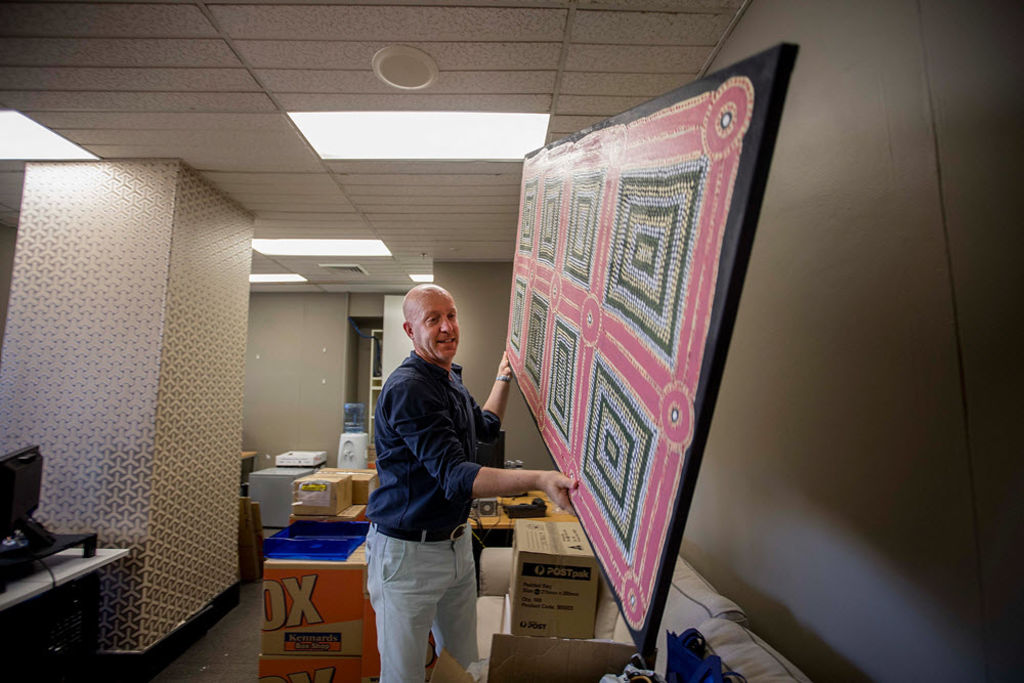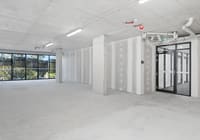
'Make-good': The clause in commercial property leases that has become a 'cash grab from landlords'
When small business owner Philip Engelberts quit his lease in a city fringe office after 14 years, he felt he was leaving it in perfect condition.
Since first moving in, he’d extensively renovated the 85-square-metre office twice, lining its walls with expensive wallpaper and installing about $40,000 of expensive bespoke joinery.
But then came the knockout blow: the landlord insisted he strip the office back into its original condition in line with the ‘make-good’ provisions of the lease.
“I’d given him two to three months’ notice, hoping he might find a new tenant in that time who’d love the fit-out I’d done,” said Engelberts, who ran his eight-employee PR company Philip Engelberts Public Relations from the office in East Sydney.
“I knew it would be the perfect fit-out for a creative or service industry company.
“But the landlord said that would be very unlikely. He said either I strip everything out myself, or pay him a cash settlement for him to have a company of his choice strip everything out. It felt very much like a cash grab. His new tenant could well want to rent the office as it was, so that cash payment would be just money going into his pocket.”
The make-good provision in a commercial real estate lease is often the most contentious part of any contract. It’s a standard inclusion to return a premises back to its condition when first rented, regardless of any improvements done in the meantime.
And with office fit-outs costing anything up to $2,000 a square metre if they include all the latest technology, said Thomas Fredriksen, associate director office leasing at Colliers International, that could be a costly exercise.
“It certainly can be a contentious area,” Fredriksen said. “It depends how well it’s been documented in the lease because there are so many different ways a make-good can be triggered. So first and foremost, the most important thing is having it in clear language because often they’re all over the place, with lots of different clauses, and it can get pretty confusing.”
It needs a certain amount of expertise to negotiate the make-good at the start of the lease, he said, with some companies offering no make-good provision if they stay for 10 years or more. Others will always include it as they won’t have any idea of the state of an office into the future.
In Engelberts’ case, his building manager said it would be good if he managed to find a new tenant who wanted to take on his fit-out, but Engelberts would still need to pay a cash settlement for a make-good as the tenant would be unlikely to want to take that responsibility on.
As a result, Engelberts eventually employed an office fit-out company to strip out all the improvements he’d introduced.
The building manager said it was ”a difficult process for each tenant depending on how they negotiated their lease,” and he would not be making any further comment.
With the commercial leasing market now so tight, with rents rising and incentives falling, there are even some landlords around now taking advantage of tenants via the make-good provision, advises Julian Kurath, director of LPC Cresa, who
oversees a range of lease management activities.
“If tenants move into an existing fit-out, landlords are now starting to push for you also to make-good,” Kurath said. “So you’re having to budget for a make-good inherited from the previous tenant, and you don’t know if the previous tenant paid the make-good provision too.
“Moving into an existing fit-out is of value in this market but you question whose responsibility it is for the make-good. Maybe there’s an element of double-dipping there from the landlord.”
For plain, generic fit-outs that suit the open-plan office, especially with the rise in shared working spaces, Kurath questions the value of returning it to an old-fashioned office of small work spaces. “With that move to more generic adaptations, maybe landlords will start to take a different view of make-goods,” he said.
“But in the meantime, it definitely can be a cash grab from landlords, with an element there of double dipping. For instance, we have a case at the moment where a tenant is being asked to make-good a fit-out that’s already 12 years old. Any fit-out would be an improvement on the original but to ask him to rip out anything that’s been done makes absolutely no sense at all.”
Hamish Henderson, associate director of sales and leasing at Knight Frank, said that make-good is the major difference between commercial and residential property.
At the end of a residential lease, a property inspection report is carried out. At the end of a commercial lease, there’s no report, just the make-good.
“The legal responsibility is to return it to the condition it started out in, in the lease,” Henderson said. “The commercial reality is that the fit-out can be beneficial for the incoming tenant, and that’s a negotiation that can take place with the landlord at that point.
“The cash that they save can be put towards incentives for taking on the lease. But I had one space where the tenant had spent close to $300,000 on its fit-out and he wanted to sell that to the next purchaser. But the new guy didn’t see any value in his fit-out at all, and told him to take it with him. Taking it out and trying to put it somewhere else, or trying to sell it … it’s like buying a new car and watching it depreciate in value …”
Sometimes an exception is made for hardware improvements like the installation of toilets or a kitchenette that new tenants would also need, but that’s also a negotiation that had to take place right from the beginning of a lease, Henderson said.
“It’s about give and take, but it can be controversial at times. It’s always important for someone to get good legal advice.”
An excellent fit-out 10 years ago, could be a dated one today, said Zelman Ainsworth, head of Victorian retail leasing at agents CBRE. “Also, one person may love it, but it might not be to the next person’s taste.
“It’s always important to get professional advice before the lease agreement so you’re not caught out when the lease expires, or there are misunderstandings. Otherwise, any company can be faced with a lot of expense and aggravation.”












